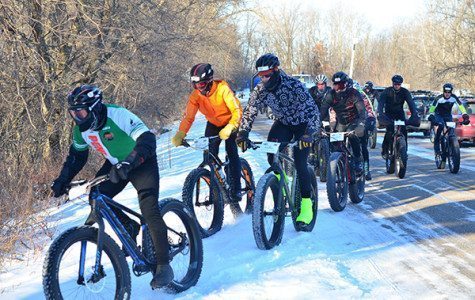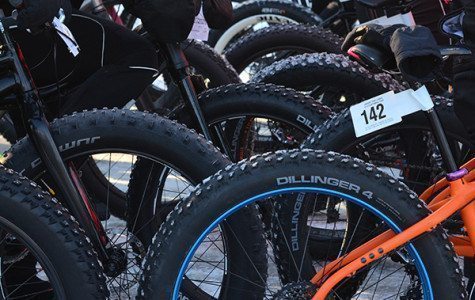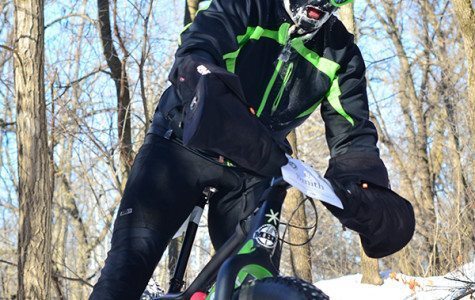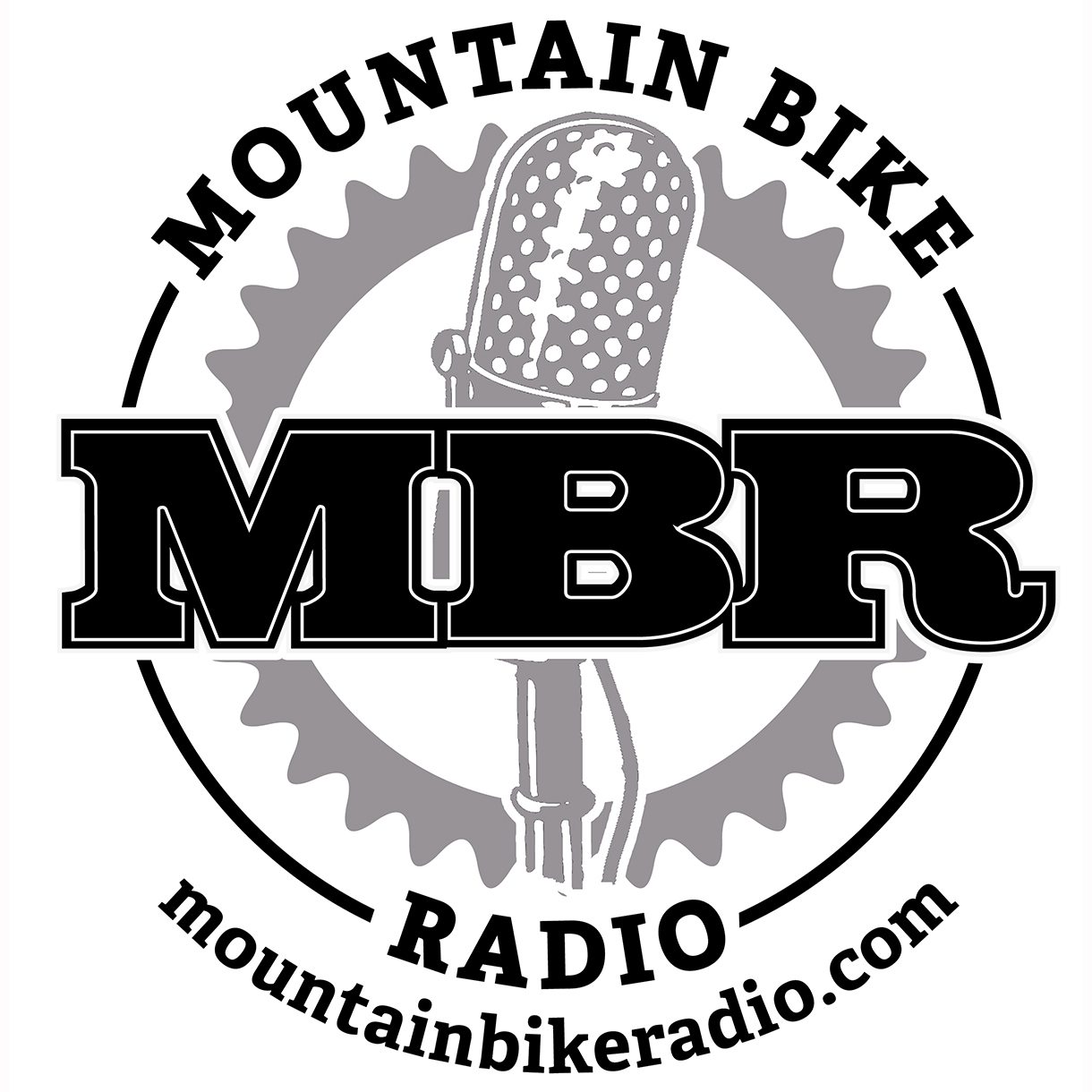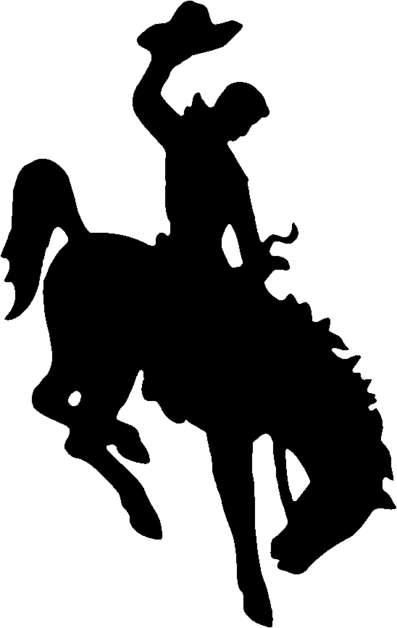Memory Lane
Everything can be a journey and I feel like my bike story has and I wanted to lay out my experience with fatbikes. I want to take a quick trip back down memory lane, back to my first experiences with fatbikes. I started regularly mountain biking in 2006. Before that I owned a $200 mountain bike from either Dick’s or REI, I can’t really remember. My first memory of trying that junker mountain bike was in either the summer of 2004 or 2005, during my quick stint living in Minneapolis. I searched around for trails and landed on Afton Ski Hill which is near the border of Wisconsin and Minnesota, south of Interstate 94. It seemed like a good option and I think that I was on my way from Minneapolis to somewhere in Wisconsin, so I stopped off to see what mountain biking was all about.
That was an eye-opening experience. I had the fitness because I was in great running shape and was already doing some triathlons, but damn. The technical nature of riding on trails and all the power necessary to do all the riding was something I had not really experienced. I was in. I could definitely do much better. So I tried and tried and tried… and now MBR exists…ha.
I moved to Madison in the fall of 2005 and one of my first purchases in the Spring of 2006 was a Gary Fisher Tassahara that I picked up for maybe $300 or $400. The summer of 2006 is when I did some regular mountain biking in my training up to the only Ironman I’ve done. In 2007, I started racing, used the Tassahara for that entire season, before getting what I consider my first “superbike,” (over $1000! ha) a Gary Fisher Ferrous 29er. Looking back, it’s pretty funny to see what my limited mountain biking knowledge and experience was. Oh well, everyone needs to start somewhere I guess. It’s also crazy to see what has taken place in my life over a short ten years.
Why am I sharing all of my back story?
Let’s fast forward a couple years to 2009. We recently moved outside of Denver and I had definitely ratcheted up the amount of riding I was doing. With my new-ish found love of mountain biking, proximity to trails played into the location of the house we purchased upon moving there. And, hell, we ended up buying a house a mile from the northern terminus of the Colorado Trail, how could I not?
I had been reading information about the new Surly Pugsleys that were being offered. I actually remember coming across some information about some of the first framesets that were available back in 2005/2006 and it stuck in the back of my head. So when I started seeing those purples ones in articles, I was intrigued.
Further, my first in-person introduction to fatbikes was at the Leadville Winter Mountain Bike Series during the winter of 2009/2010. At that point, most of us showed up with the widest tires we had and hoped that the snow was hard enough to hold us up. As a sidenote, I think that this may be one of the oldest winter bike racing series out there.
I did a lot of winter/snow riding starting in 2007 while we were in Wisconsin before moving to Colorado and continued to ride a lot in the winter after moving. At this point, I was more than intrigued. I wanted a Surly Pugsley.
[I dug up this video from December 2010 while I was riding with my brother…pre fat]
The rest is my history in the world of fatbikes (during all of this time, I rode and owned all sorts of fatter tired bikes):
– January 2011: I purchased a white (2011) Surly Pugsley
– Spring 2011: I was one of the four guys who launched Twenty2 Cycles. We started early focusing on fatbikes and 29in hardtails.
– Later in 2011: We were off and selling Twenty2 bikes, including what we called the Bully. This piece by Outside Online was pretty awesome (especially considering it was all on their own – we did not send Outside any request to get on that.)
– By early 2012: Twenty2 was going well and fatbikes were definitely the hot ticket. (I was no longer part of Twenty2 midway through 2012)
– February 2012: Twenty2 “sponsored” the inaugural Fatbike Frozen Forty near Minneapolis, Minnesota.
– May 2012: The first edition of Mountain Bike Radio was born.
– February 2013, February 2014, February 2015: I partnered with Brad, the creator of the Fatbike Frozen Forty, in putting the race on.
– February 2016: I took the Fatbike Frozen Forty over from Brad and am the sole owner of it.
I’ve been around fatbikes and have seen the progression over the last 5-6 years and it’s been interesting to watch it all unfold. In the countless discussions and experiences I’ve had since 2011, I knew the landscape would be different, but I didn’t realize the influence fatbikes would have until later on.
Sometime around the end of 2012 or beginning of 2013, not long after the Surly Krampus hit the scene, did I realize the potential that the “traditional” fatbikes opened up and it’s been a whirlwind since.
Fatbikes – What Have They Done to Us?
Fatbikes have turned the bike world on its head. 5-10 years ago, the sole goal was to build the lightest possible bike setup and market it as your opportunity to be your fastest self. Pictures and videos lead us all to believe that the lightest bike possible was the best answer for everything. Along comes the 40-lb Pugsley and we didn’t know what to do.
Many people blew off the idea of fatbikes. They were a joke to many and a fad in everyone else’s eyes. That’s normal. When anything comes along in any area that changes the direction of an industry, it’s normal to have naysayers and be ridiculed. There is still some of this sentiment around today.
In many areas of the country and world that don’t experience a real winter, fatbikes really haven’t experienced the same growth as areas such as the Great Lakes Region. I don’t have hard numbers on that, but just from observing trends, people, and the general cycling world, it’s pretty clear that fatbikes are still more of a winter/offseason-focused bike. But, they’ve had a large impact on everyone – north, south, east, west.
So, How Have Fatbikes Affected Us, Exactly?
This is the key point about fatbikes that has affected all of us:
Fatbikes have forced us to think outside of the box. It’s really that simple. They have made us more open-minded.
While I suspect that we would have evolved into a lot of the current ideas and styles that we see now (plus size rims and tires, wider rims and tires for all applications, dedicated year round fatbike events, bikepacking, more versatile bikes, etc) fatbikes have accelerated the trends we see across a lot of the cycling industry, including road, gravel, and mountain biking. I would even argue that the current gravel road riding movement is due in part to the rise in fatbikes.
Fatbikes have forced us to think outside of the box we were in. We started considering heavier bikes, wider wheels, and we started to reassess our relationship with our tires. Tire tread, width, pressure, and the action on the particular surface all play a vital part in our riding. I feel like we became overly focused on other aspects of bikes, including frames, components, and other (often more expensive) parts of the bikes, while forgetting the importance of tires.
As we sit in 2016, a lot of conversations now start with discussions about wheels, tires, widths, and what options are best for the terrain. I’ve observed more and more people considering bikes that offer more options, regardless of weight, just to have more fun and ride areas they haven’t before. It’s exciting and quite refreshing to see that people are doing different things.
Do you want some examples of how things have changed and evolved?
– Guitar Ted is testing some wider rims for gravel riding applications on Riding Gravel
– Blogger extraordinaire, weight weenie, and much more, Dicky, says yeth to plus size
– Several bikepacking sites have started up in the last few years, including Bikepackers Magazine and Bikepacking.com. Have a look through them and you’ll notice that a lot of the discussion is about out-of-the-box sort of riding. Looking back 10 years ago, who could have predicted these types of rides and adventures would be a thing?
– The Trek Stache: Mountain bikes are quickly becoming very versatile pieces of equipment. Gone are the days that it is acceptable to barely fit 2.4″ tires. If you’re making a new hardtail bike that doesn’t accommodate at least 2.4’s on something like a 30mm wide rim, you’re living in 2010. Initially, companies were promoting fatbikes with different wheelsets for all year riding, but there was still compromise – geometries were off, the wide bottom brackets still cause wide q-factors, and the fact that a fatbike with a regular 29er wheelset just feels out of place. Doable, yes. Best option, no. In comes bikes like the Stache. Versatile and a hardtail mountain bike ready to roll with many options just short of running “regular” fatbike tires.
– Bike bags? Yeah, check this list on Riding Gravel. This list was only a few 5-10 years ago. Even then, the offerings were pretty limited.
I don’t have a crystal ball, but I’m confident in saying that we’ll only continue to see more options that are geared towards versatility, functionality, and an overall sense of doing something unique to push ourselves in different ways.
Travis Brown Interview
You’ll see an interview coming through soon here on MBR that I did with Travis Brown. Watch for that here soon. We discussed many topics, including his history getting into the top level of mountain biking, his Olympic experience, STC and IMBA, as well as his current life and experience in product development with Trek.
Travis has been a key figure in the development of several Trek mountain biking products, so getting his insight into the evolution and future of fatbikes was interesting and got me excited for where we are and where we are going as a mountain bike community.
I’d encourage you to have a listen of that interview to hear his thoughts on fatbikes.
News Reminder
I also want to remind you that I have a show going that I’ve called “The Link.” It’s a newsy-ish type show that I want to use to bring news to your attention that isn’t really the kind that you’ll find around all the other media/sites. Yes, some of that type will be mixed in, but as it goes, I really want to focus on the news and information that isn’t necessarily about driving clicks as much as it is bringing you some useful updates.
The episodes aren’t going into detail – I’ll basically make note of it, maybe say a blurb, and then I’ll link it in the show notes. All you need to do is listen and then if you hear something, check the show notes and click on the links for more information.
What does “The Link” mean for you?
It means that all you need to do is go to the show MAIN PAGE, head to the bottom of the page, and fill out the form to submit your news. Then listen and share with your circles.
Do you enjoy and appreciate the MBR content?
If you like the content that we’re putting in front of you and in your ears, the best thing for you to do is go HERE and do what works best for you. We really appreciate your involvement and support.
WHAT DO YOU THINK ABOUT WHAT FATBIKES HAVE DONE TO US? I’d like to hear your thoughts.
If you have any questions about this post or Mountain Bike Radio, feel free to contact me at [email protected]
– Ben

